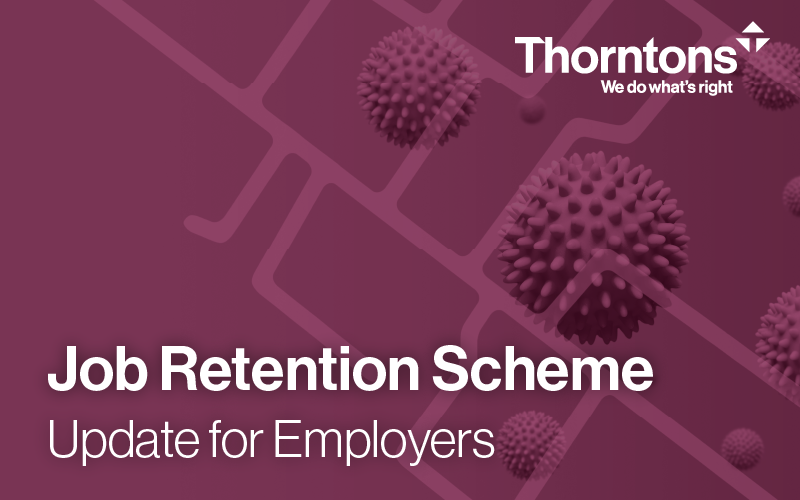
On 31 October 2020, the Coronavirus Job Retention Scheme was unexpectedly extended until March 2021 to allow employers to continue furloughing eligible employees over the winter months. The news came as a great relief to many employers who were faced with a continued downturn in service levels over the winter period.
Full details of the extension are discussed in our earlier blog, available here. Since then, the Government has updated its online guidance and published a new Treasury Direction setting out the legal framework for the extension. Little has significantly changed from the initial policy paper released in earlier November but the more detailed guidance does provide clarification of certain key issues, most notably, the deadlines for claiming under the extended CJRS. Below, we discuss the clarifications and newest changes these latest publications have provided.
New: stricter claim deadlines
The initial guidance told us that claims are to be submitted on a monthly basis. The online guidance now confirms what the deadlines are for submitting a claim for the previous calendar month. Employers have two weeks from the end of the previous month to submit a claim unless there is a “reasonable excuse” for failing to meet the deadline. The deadlines are set out below:
- 14 December 2020 for November 2020 claims
- 14 January 2021 for December 2020 claims
- 15 February 2021 for January 2021 claims
- 15 March 2021 for February 2021 claims
- 14 April 2021 for March 2021 claims
Employers should take all steps necessary to meet these deadlines as the guidance only allows very limited leeway for late submissions. In terms of what constitutes a reasonable excuse, only serious, unavoidable matters will apparently be considered. Examples are provided in the online guidance and include death of a close relative, hospitalisation and life threatening illnesses, self-isolation and IT issues with the HMRC portal. The possibility of outsourcing the claims process will be relevant to this assessment so even extreme personal circumstances may not be enough to satisfy HMRC if it was possible for the employer to arrange for someone else, such as a colleague, accountant, payroll consultant or other professional advisor, to submit the claim on their behalf.
New: HMRC will make claim information public from 1 December 2020
In a change from the previous iteration of the scheme, the online guidance confirms that HMRC will publish a list of employers who claim under the scheme from 1 December 2020. Under the Treasury Direction, agreement to such disclosure is a condition of reimbursement. The list will include the employer’s name, company number and an approximate value of the claims made. Individual employees will also be able to see the details of claims made on their behalf on their Personal Tax Account.
This is a blanket change affecting all employers claiming under the scheme from December so both SME’s and larger employers will be affected. The only exception made is for employers who notify HMRC that such publication would result in “serious risk of violence or intimation” to certain people, including the employer itself and any directors, partners or employees. Employers who believe this to be the case must notify HMRC as soon as possible and explain why such a risk exists, including documentary evidence to back this up.
New: No reimbursement for notice from 1 December 2020 onwards
The initial policy paper suggested that periods in which an employee is serving statutory or contractual notice could not be claimed for under the scheme. That has now been confirmed in the online guidance although this rule only kicks in from 1 December 2020. Claim periods on or after this date cannot include notice. This is not restricted to redundancy and includes notice following any form of termination, whether retirement, resignation, redundancy or otherwise.
This means that employers, for any notice period from 1 December 2020 onwards, will need to meet the cost of such notice themselves. It is worth bearing in mind that notice should always be paid at the employee’s full contractual rate whether pre-1 December 2020 or otherwise.
Clarification: Furlough agreements must be in place before the relevant claim period begins
The need to have a written furlough agreement is not new. The policy paper allowed for retrospecitve furlough agreements until the 13th November 2020 but from now on, such agreements must be in place before the relevant claim period begins. So if an employer is looking to furlough staff from 1 December 2020, signed written agreements must be in place by 30 November 2020.
However, variation during a particular claim period is permitted after the claim period has begun provided both the employer and employee agree that that variation. This does allow for some degree of flexibility if, for example, an employer needs to move staff from a flexible to a full furlough arrangement during a particular claim period.
Clarification: Annual leave should be counted as furloughed hours capable of reimbursement
The guidance in respect of holidays during furlough has not been significantly updated. This means employers can continue to claim for annual leave taken during a furlough claim period. For those employees who are flexibly furloughed, the guidance confirms that holidays can, and indeed, should be processed as furloughed hours rather than working hours.
However, there is a caveat. The online guidance now warns that employers should not “put employees on furlough simply because they are on holiday”. Since 1 November, the CJRS is not limited to those who were furloughed previously and there are no minimum claim periods, which would have created the scenario where employers could have claimed reimbursement for annual leave for staff who are otherwise not using the scheme. This is arguably not in keeping with the CJRS’ purpose as annual leave is a cost employers need to meet regardless of the pandemic. It is presumed that this sentence is there to avoid that practice, therefore employers should avoid furloughing staff who are not otherwise on furlough purely to seek reimbursement for annual leave.
The current, extended version of the scheme will remain as is until 31 January 2021. The scheme is currently open until the end of March 2021 and we await further annoucements in the new year to see how it will develop from February onwards.
For more information contact the Employment Law team on 03330 430350.
